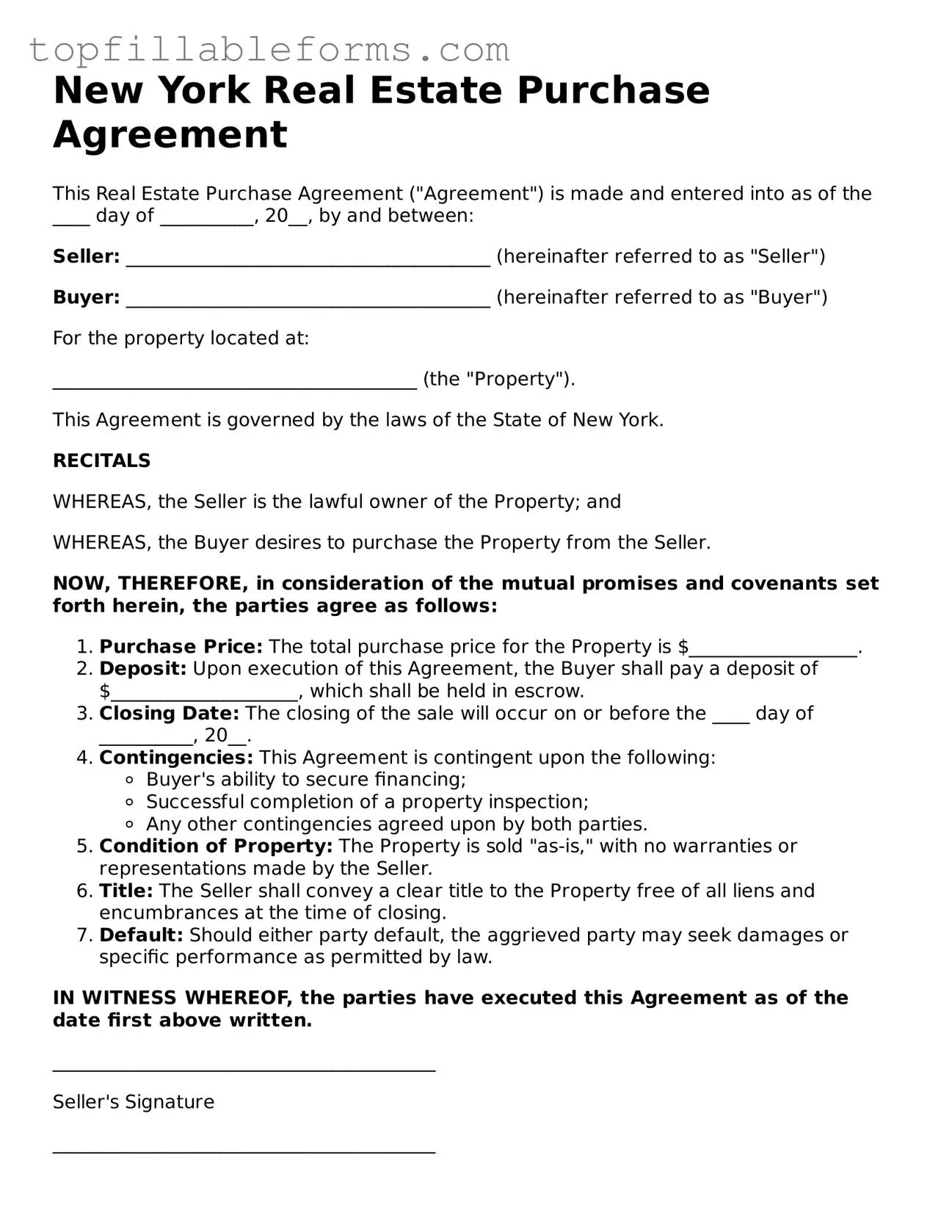New York Real Estate Purchase Agreement
This Real Estate Purchase Agreement ("Agreement") is made and entered into as of the ____ day of __________, 20__, by and between:
Seller: _______________________________________ (hereinafter referred to as "Seller")
Buyer: _______________________________________ (hereinafter referred to as "Buyer")
For the property located at:
_______________________________________ (the "Property").
This Agreement is governed by the laws of the State of New York.
RECITALS
WHEREAS, the Seller is the lawful owner of the Property; and
WHEREAS, the Buyer desires to purchase the Property from the Seller.
NOW, THEREFORE, in consideration of the mutual promises and covenants set forth herein, the parties agree as follows:
- Purchase Price: The total purchase price for the Property is $__________________.
- Deposit: Upon execution of this Agreement, the Buyer shall pay a deposit of $____________________, which shall be held in escrow.
- Closing Date: The closing of the sale will occur on or before the ____ day of __________, 20__.
- Contingencies: This Agreement is contingent upon the following:
- Buyer's ability to secure financing;
- Successful completion of a property inspection;
- Any other contingencies agreed upon by both parties.
- Condition of Property: The Property is sold "as-is," with no warranties or representations made by the Seller.
- Title: The Seller shall convey a clear title to the Property free of all liens and encumbrances at the time of closing.
- Default: Should either party default, the aggrieved party may seek damages or specific performance as permitted by law.
IN WITNESS WHEREOF, the parties have executed this Agreement as of the date first above written.
_________________________________________
Seller's Signature
_________________________________________
Buyer's Signature
This template is provided for informational purposes only and does not constitute legal advice. Parties should seek legal counsel to ensure compliance with all applicable laws and regulations.
